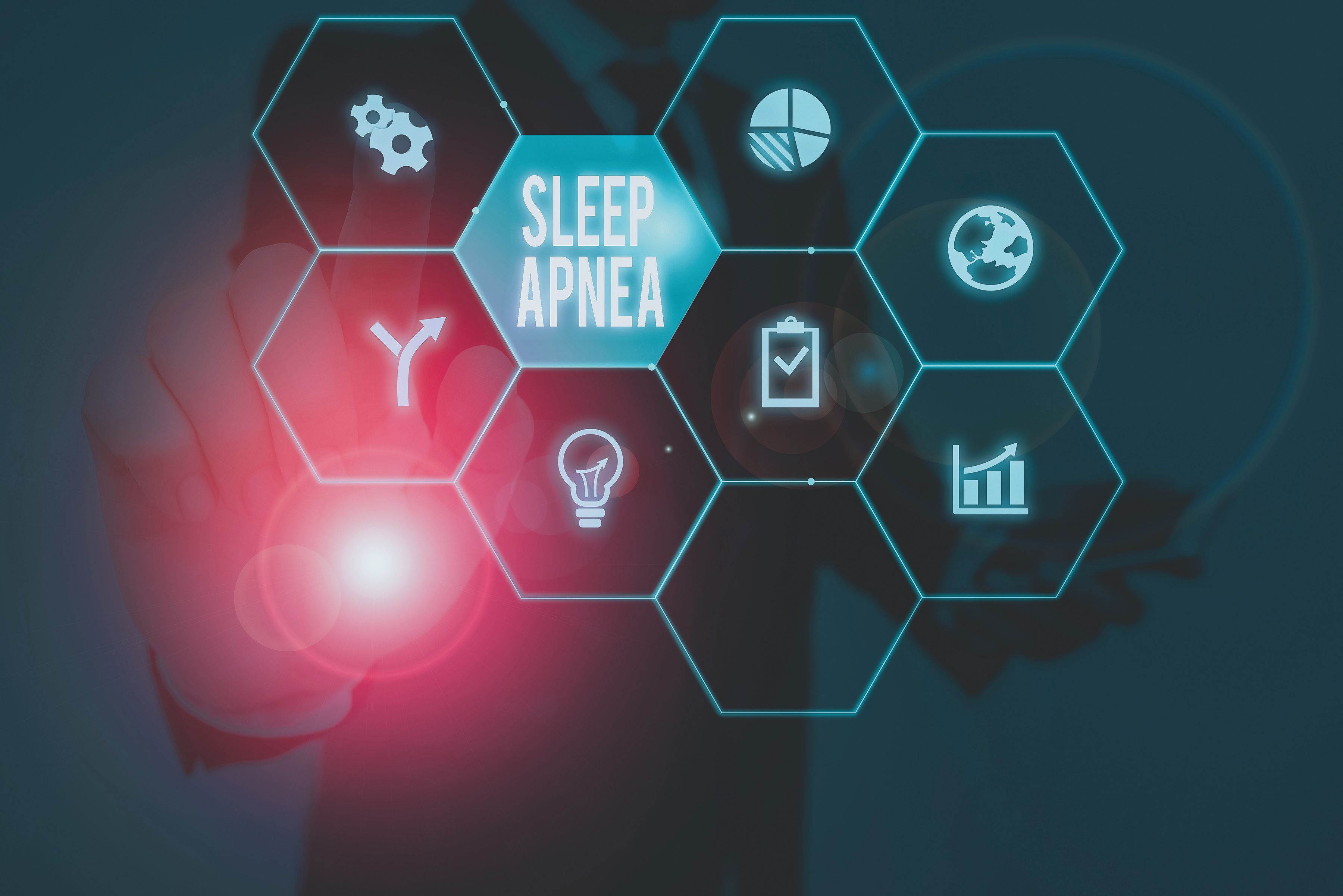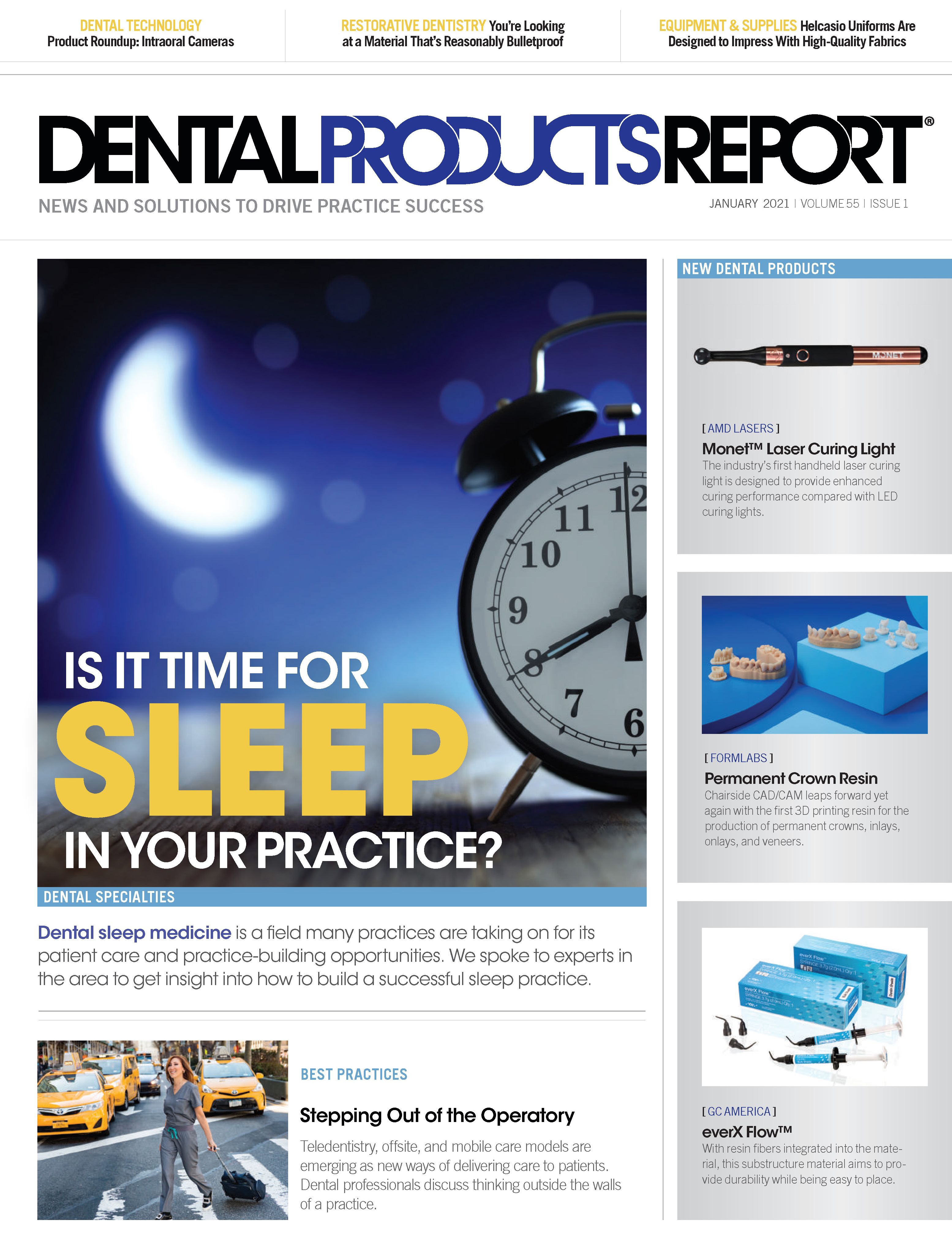Say “Good Night, Gracie!” The Lowdown on Sleep
Dental practices are in a unique position to help patients realize the multiple benefits that come from reliably sleeping longer and better.

When I was a kid, I loved the comedian George Burns. He and his wife, Gracie Allen, had been a vaudeville act, with George playing straight man to Gracie’s “ditzy wife” routine. They moved their act to television in the early days of that medium and were very popular until Gracie’s unfortunate passing at the age of 62. George lived to be 100.
To end their comedy routines, George would lead with the line “Say good night, Gracie.” She replied with “Good night, Gracie!” It was a signature sign-off, and audiences loved it.
Why are we talking about 2 comedians from the black-and-white era of television? George Burns always reminded me of my Grandpa Flucke (who was quite the philosopher and whom I quote frequently). I also think it’s a great way to introduce the concept of having a good night, plus my grandfather always said, “Son, there’s no substitute for a good night’s sleep.”
I look upon my job here at Dental Products Report® as spending my time searching and researching for disruptors—those products, techniques, and ideas waiting just over the horizon, ready to change our profession.
Sleep is a disruptor that I am incredibly excited about. Although it isn’t a subject that is “just over the horizon,” it’s still in the category of a serious disruptor. It holds so much promise that we are devoting a large percentage of this month’s issue to discussing it. Let’s see how we can help patients lead healthier lives with better quality of life than perhaps they’ve ever had before.
The Importance of Sleep
It frequently amazes me to look back a few decades and see how our understanding of dangerous situations and risk has evolved, in health care and life in general. When I was young, there were no seat-belt laws (or seat belts, for that matter), and I can remember being next to my mom in the front seat of the car as she ran errands. If she had to slam on the brakes, she would throw out her right arm and clothesline me across the throat to keep me from bouncing off the windshield. That was the idea of “child restraint systems,” and everyone did it. I have some vivid memories of my mother’s arm crushing my trachea as the brakes and tires let out that bloodcurdling squeal.
Sleep is a lot like that. As recently as 10 years ago, we truly had no concept of the importance of sleep. Our lives accelerated beyond what our bodies could handle, but no one thought much of it, beyond the proliferation of coffee shops and energy drinks.
Studies have shown that lack of quality sleep (and that’s an important delineation: not just sleep, but quality sleep) increases the likelihood of type 2 diabetes, obesity, and heart disease, to name a few potential sequelae. Studies with test animals have demonstrated lack of some or all sleep cycles could reduce life expectancy from 2 to 3 years to 3 to 5 weeks in those animals.
In addition to the physical diseases related to lack of sleep (and that list is not limited to the 3 mentioned above), there are many psychological pathologies associated with lack of sleep.
Memory and information processing seem especially affected by lack of sleep, specifically REM sleep. Many of us complain of being schedule overloaded and not able to remember things well. There is a high degree of probability that these symptoms are related to a lack of restful sleep.
Depression also affects our psychological well-being. There are different levels of sleep, and a healthy sleep cycle involves spending the proper time in each level. REM sleep is critical and when a person is not sleeping well, they do not spend enough time in that cycle. This leads to the brain trying to make up for lost REM during the next night. This can sometimes result in a person stating, “All I did last night is dream, and I woke up exhausted.” This is from a process referred to as REM rebound, where the brain tries to make up for lost REM. However, most medications prescribed as antidepressants tend to reduce REM. This creates the potential of prescription chemistry interfering with the sleep cycle, which could then affect the patient’s depression. It’s sort of a pharmacological chicken-and-egg syndrome that works both ends against the middle.
The Dental Component
Physicians were first on the scene of obstructive sleep apnea (OSA). Unfortunately, the medical model of treatment was not exactly a perfect delivery vehicle for treating OSA. The medical model frequently involved expensive scans, overnight sleep studies in special facilities, and expensive equipment, usually a continuous positive airway pressure (CPAP) device.
In addition, few have a dentist’s training and knowledge of the head and neck. OSA is a medical issue that dentists are uniquely qualified to solve.
Most of us have heard the old expression of “drinking from a fire hose.” The basic meaning is that there is so much of something being delivered that it is impossible to keep up. That is also the idea behind CPAP. The device pumps a high volume of air into the nose and/or mouth under high enough pressure to open the airway and push oxygenated air into the lungs. The problem for many patients is the incredible volume of air, as well as the hardware covering the face. A sealed face mask or sealed nasal cannula is necessary to allow the proper volume of air to be delivered. Although the device is effective, for many patients it is uncomfortable and brings on feelings of claustrophobia.
Among individuals who purchase a CPAP, 60% do not use it. That is an amazing opportunity for our profession. Think about that—the success rate of CPAP is 40%. And that is just the percentage of users. That does not account for the number of individuals in that 40% who, despite usage, still suffer from low oxygenation while sleeping or fail to get restful sleep because of the hardware on their face.
This 60% is the low-hanging fruit of the sleep crisis. They have been informed of a medical diagnosis and are simply waiting for a solution.
For the portion of the patient base not given a diagnosis, most patients are willing to discuss their problems with you because most are very aware of their situation. They either have woken up gasping or been told they snore like a freight train. The best way to engage with patients on this problem is to begin asking and/or putting materials in the office about signs and symptoms of OSA. After doing this, I noticed patients or significant others brought up the subject before I could.
There are many great resources for training to treat this disease and doing so is straightforward. I’ll discuss training later in this column.
Why Now Is the Time to Treat OSA
I happen to work with a company called SleepArchiTx for the sleep part of my practice, and I reached out to CEO Alice Limkakeng for a discussion on this article. When I asked her about why a doctor would want to treat sleep disorders during the coronavirus disease 2019 (COVID-19) pandemic, here was her response:
“It is only in the deepest part of our sleep cycle (the N3 stage) where our bodies repair and rebuild our immune systems and maintain health. If we have sleep apnea, we don’t get to the N3 stage and our immune systems are compromised. In this environment, we need our immune systems to be at their peak, so everyone needs to be getting high-quality, deep sleep.”
CPAPs increase risk of virus transmission and oral appliance solutions by dentists to treat sleep apnea are now frontline therapy. Medical sleep doctors know this and are more willing to work with dentists than ever before.
Treating patients for sleep is safe. It involves a non aerosol screening, and sleep testing can be done remotely. Treating patients for sleep is essential—doctors can talk about the necessity and incredible importance of treatment (vs other procedures patients might deem optional).
How Do I Move Forward?
Quite obviously, our patients need our help. While we are fighting COVID-19, we are also dealing with a sleep epidemic. Many patients are suffering from the disease, and those unfortunate individuals need our help.
Many doctors are interested in treating this disease but are wondering about next steps for learning. There are many continuing education options that can be studied virtually. Simply entering dental sleep training into Google yielded 69.3 million hits.
Learning to treat sleep disorders is not difficult. It provides a lift knowing that you are potentially saving lives.
SleepArchiTx (sleeparchitx.com) provides a training solution, including sleep studies analyzed by certified sleep physicians, consultations with experienced clinicians, device fabrication, and billing help. Whether you are new to sleep or have experience, they can help.
Wrapping Up
When I was younger, I was a night owl. Often, I wouldn’t even think about heading to bed until 11:30 pm at the earliest. I would sleep maybe 5 hours, then drag myself out of bed, drink caffeine, and repeat the cycle. I thought I was simply someone who didn’t need sleep, but I was wrong. My lack of sleep was a symptom of OSA. I won’t go into the details here, but I eventually received a diagnosis, and my life changed in remarkable ways.
That started me down a path of helping others like me, suffering from horrible sleep and not realizing it—or, in my case, denying it.
There is no time like now to make changes. Why not resolve to help your patients by learning how to treat sleep apnea? It’s a worthwhile endeavor, and dentistry truly does hold the key to potentially improving lots of lives.
Check it out. I think you’ll be glad you did.
